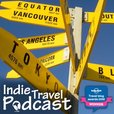
Summary: Kuala Lumpur is a bustling international city and the capital of Malaysia. Sometimes described as "Asia lite" this is a great place to accustom yourself to the bustle of an Asian city and is a perfect jumping-off point to further explore South East Asia. With quite modern and efficient infrastucture, it's a city for everyone, but a particularly useful gateway for those feeling a little uneasy about haggling in markets and squat toilets. Layout KL is a sprawling mess and no brief description will really help. Pick up a map from the tourist information centres but be aware that the different maps you can get may be aligned differently. Accommodation The full range of accommodation is available in KL, from the Couchsurfing network, to hostels, to high-end hotels. It's worth investing in a room with air-conditioning, since the weather is uniformly hot and muggy. Food A huge range of food is available in KL – from street hawkers to five-star restaurants. Every major Asian cuisine is well represented and American fast-food and Australian coffee chains help give a reminder of home to Western tastebuds. Alcohol is relatively expensive, even in supermarkets, but the supermarkets are great for stocking up on drinks and breakfast foods. Eat out for lunch and dinner though – food courts and street stalls are cheaper than self-catering. Transport Public transport system is quite good, if sometimes a little infrequent. There's a network of buses, trains and a monorail, which all use different tickets – the best idea is to buy a ticket before each journey. If you're going to be there for a month or more you can get an integrated ticket, but there isn't one for daily or weekly use. Attractions – free In the city, the Petronas Towers are worth a visit. The Golden Triangle is the region for high-class shopping, and Chinatown and Little India boast tourist markets and ethnic restaurants. So head to Chow Kit for the local food markets, or the Central Market for high quality Malaysian souvenirs. An hour or so out of the city by bus are the impressive Batu Caves. There's an immense staircase leading to a cavernous cave at the top. Attractions – seasonal The Batu Caves are also the home of Thaipusam in Malaysia -- it's one of KL's best-known seasonal attractions. In January or February each year tens of thousands of tourists come to watch over a million Hindu devotees celebrate this ancient rite in KL. Chinese New Year is another big event for KL happening in late January through to mid-February each year. Unsurprisingly the celebrations centre around Petaling street and Chinatown. There are three massive shopping events each year; people fly in from all over the place in March, May and December. These massive sales were designed by the tourism industry to help KL boost its profile as an international shopping destination. And it sure works! Attractions – paid The Menara KL Tower is the place to go for high views of the city, but the Bukit Bintang forest at its base is also worth a visit; regular tours are given and there's the chance of seeing some amazing Malaysian wildlife right in the centre of town. The Aquaria KLCC is right next to the Petronas towers and is a huge complex with thousands of species of fish. Guidebooks * Lonely Planet Kuala Lumpur Melaka & Penang; * Lonely Planet Malaysia, Singapore & Brunei; * Lonely Planet South East Asia on a Shoestring. * DK Eyewitness Travel Guides Malaysia and Singapore * Rough Guide to Malaysia, Singapore & Brunei. Where to next? * Rest of Malaysia * Borneo * Singapore * South East Asia Something to note By law, visitors must carry their passports at all times. Spot checks may be carried out to deal with illegal immigrants. This is *very unlikely to happen to you but there have been some unfortunate instances when people have not been able to produce a passport immediately.
